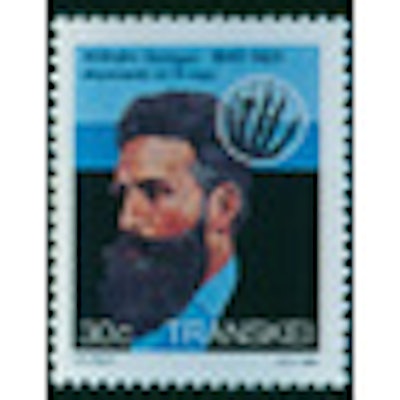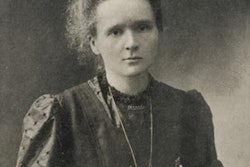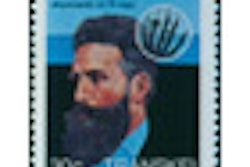
When Wilhelm Roentgen discovered penetrating x-rays, he realized that x-rays did not exist except with electric energy inserted into glass vacuum tubes. Then, the invisible rays would move across a room to penetrate living people and affect solid objects.
But shortly after Roentgen's discovery became well-known, French scientist Antoine Becquerel discovered that a form of ionizing radiation was in pitchblende and other minerals. Becquerel and colleagues Pierre and Marie Curie discovered that forms of radioactive substances, including radium, could be extracted as isotopes and used to treat humans with forms of cancer.
In the next decade, other scientists, including prominent English physicist Ernest Rutherford at Cambridge University, tested other forms of radiation and essentially detected atoms. In a few years, William Duane, a U.S. physicist studying with the Curies in France, learned to handle radium and its gas, radon, for the treatment of cancers.
In the 1920s, U.S. physicist Ernest O. Lawrence was appointed to the physics department at the University of California, Berkeley. With a group of graduate students, he explored the development of forms of radiation, and in 1929 he began to develop cyclotrons, powerful electric generators that produce intense x-rays.
Shortly after he came to California, he met Dr. Robert Stone, a prominent radiologist in the division of radiology at the University of California, San Francisco (UCSF), across the bay. Stone was spending much of his effort treating cancer patients, and he was excited about the possibility that a cyclotron could generate forms of radiation that could be used in medicine.
Also in the 1930s, Irene Curie, the daughter of Marie and Pierre Curie, and Frederic Joliot, her husband, began creating artificial isotopes. In Boston, at the Massachusetts Institute of Technology, physicist Robley Evans also was exploring the development of radioactive isotopes.
But the California cyclotrons were the most effective. As Ernest O. Lawrence developed radioisotopes, one was built for Stone's cancer treatment center at UCSF. Also in the 1930s, some of the graduate physicists at Berkeley began to insert chemicals into the active cyclotrons.
Stone began to bring a few cancer patients across the bay to be treated with neutron beams on the Berkeley campus. Lawrence's scientists, including a brilliant scientist named Glenn Seaborg, developed more than a dozen isotopes, including sodium-22, phosphorus-32, oxygen-14, iodine-128, and chlorine-32.
In 1936, Stone and medical colleague Joseph Hamilton decided to begin testing some patients with sodium-22 and, shortly thereafter, phosphorus-32. By that time, Ernest Lawrence's brother, John Lawrence, a Yale University medical graduate, had joined his brother and tried to take control and promotion of phosphorus-32 without the cooperation of Stone and his colleagues.
Stone stopped using sodium, but he continued with phosphorus and experimented with other isotopes produced by Seaborg. Stone also continued to take cancer patients from UCSF across the bay to Berkeley for exposure to neutron beams from active cyclotrons.
Activities in Europe by scientists exploring radioactive materials began to be restricted in the late 1930s following the rise of Adolf Hitler and the outbreak of World War II. In December 1941, when the U.S. was attacked by Japan in Hawaii, the American government was cautioned about the possibility of Germans building atomic bombs.
The U.S. government established a secret team to develop an atomic bomb, and experts such as Ernest Lawrence, Robert Stone, and several hundred other scientists were brought together on the project.
The use of artificial radioactive materials produced in California for phosphorus-32 and other radioisotopes continued outside of the secret atomic bomb program. A few cancer patients from San Francisco were still taken to Berkeley for exposure to the reactions.
World War II ended after the atomic bombs were dropped on Japan in August 1945, and the federal government in 1946 passed a bill creating the Atomic Energy Commission to provide support for doctors and scientists.
The earlier activities of the cyclotrons continued with Lawrence, and the development of isotopes for cancer treatment continued with Stone and soon other radiation oncologist physicians. So the use of radioisotopes became a growing part of medicine, and the concept of nuclear medicine became part of radiology and other medical disciplines.
Otha W. Linton, MSJ, retired in 1997 as the associate executive director of the American College of Radiology (ACR) after 35 years. He also served as executive director of Radiology Centennial in 1995. Mr. Linton holds a bachelor's degree in journalism from the University of Missouri and a Master of Science in journalism from the University of Wisconsin. His work has been published widely in the U.S. and abroad, and he is a regular contributor to several journals including Academic Radiology, the American Journal of Roentgenology, Radiology, and the Journal of the American College of Radiology. He joined the ACR staff in 1961 and had a key role in its growth. Over the years, his responsibilities with the ACR included government affairs, public relations, marketing, publishing, industrial liaison, and international relations. Just before his ACR retirement, he became the executive director of the International Society of Radiology and served in that role until 2012. Also, since his retirement, he has written and published 14 histories of radiology societies and academic centers.




















